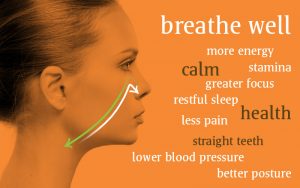Breathing and diaphragm function should be part of everyone’s training for life in general. There has been so much research about dysfunctional breathing AND how optimal breathing can cure what ails you (injuries, allergies, inflammation, and so on). Wim Hoff, Postural Restoration (PRI), Dr. Buteyko, and many more have developed and used specific breathing techniques to conquer almost anything. Breathing is the focus for heavy weight lifting, yoga, meditation, and of course running (the list can really go on and on).
Aside from other types of “prehab” for running, diaphragmatic breathing and control should be part of weekly routine. The most important strategy is to do this work while laying on the floor with the knees up. The floor provides your body with tremendous support and takes some postural imbalances out of the equation. And when this happens, it allows your body to focus on what you want (we do almost any initial rehabilitation for injuries on the floor and then move to kneeling, then standing).
For longer distance running, one of the best practices is to run with the mouth completely closed, only breathing in and out through the nose. As difficult as this sounds to some people, it is essential to put into practice. Here are a few reasons to give it a go:
- Nose breathing will force you to slow down your running. This is important because it will allow you to recover faster and reduce your risk for
 injury.
injury. - Nose breathing improves the quality of oxygen taken in the body. The natural filtration of hair follicles helps to cleanse the air as you breathe. Breathing through the mouth will allow particles directly into your airway.
- Nose breathing helps transfer nitrogen oxide (NO) to the lungs and alveoli. NO relaxes and expands arterial walls, which improves oxygen consumption and therefore energy in the body.
- There’s also a lot of research indicating that nose breathing decreases airway/breathing-type disorders such as the symptoms of asthma, nasal congestion, heartburn, allergies, etc.

The key is to start with a very small distance or timeframe to get used to the feeling. I have a deviated septum and immediately questioned my ability to run without breathing through my mouth. Truth be told, the first couple of runs (at 15-20 minutes each) I felt like I was blowing mucus out of my nose the whole time. After those initial runs, I was able to build up to 90-120 minutes without a problem. I did notice that when I was running the marathon, I would open my mouth during some of the hills and felt like I had used a Mario Brothers’ star power.
Whether you’re up for the challenge of nose breathing or not, you should definitely take some time to focus on improving your breath. Check out the below video on how to improve your breathing with these easy techniques!
